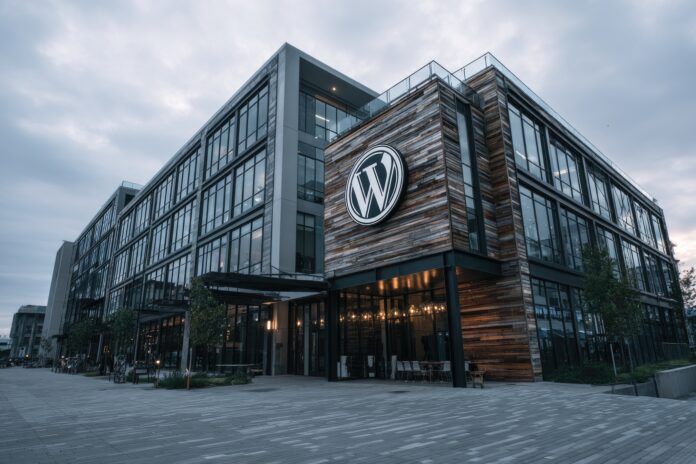Automattic Recommits to WordPress Core: What This Means for the Open-Source Ecosystem
Automattic says it will start contributing to WordPress again after a significant pause—an announcement that reverberates through the broader digital landscape. With WordPress powering over 43% of all websites, Automattic’s renewed participation is not merely corporate news; it’s a turning point for thousands of developers, creators, and businesses worldwide who rely on this open-source platform.
Understanding Automattic’s Vital Role in WordPress
Founded by Matt Mullenweg, one of WordPress’s co-creators, Automattic provides both direct contributions and essential resources to WordPress Core. Because of this, their work often steers the direction for major features and sets high standards for code quality. Historically, Automattic engineers and community liaisons have been behind landmark innovations such as the Gutenberg project, Full Site Editing, and accessibility improvements. Most importantly, their commitment sets an example for corporate involvement in open-source, blending commercial success with collaborative, community-driven software.
When the Pause Started—and Why
In early 2024, the WordPress community began noticing fewer contributions from Automattic in Core development cycles. Forums like Make WordPress Core and social channels buzzed with questions. Was Automattic stepping back for good? Would this pause shift project priorities?
The root cause was a strategic realignment. Facing high-priority product updates for Jetpack, WooCommerce, and Tumblr, Automattic temporarily redirected its technical force. Besides that, the pause allowed leadership to evaluate its open-source engagement against the company’s long-term goals. Yet, through every public statement, Automattic underscored a commitment to open-source values and ongoing stewardship—an assurance that carried weight, even amid uncertainty.
The Effects of Automattic’s Reduced Involvement
This shift did not go unnoticed. Open-source projects thrive on active, distributed contribution, and Automattic’s brief retreat highlighted potential vulnerabilities within the WordPress ecosystem. Some community members raised concerns about the possible slowdown in developing key features, particularly those requiring deep institutional knowledge. Others argued the pause could empower smaller contributors to step up. Therefore, while the resulting debate was sometimes heated, it ultimately spotlighted the need for resilient, diverse governance.
Automattic’s Renewal: Strategic Contributions With Wider Impact
After several months, Automattic’s leadership announced a renewed focus on contributing to WordPress Core and community initiatives. According to statements made in late May 2024, over 20 Automattic engineers will be reassigned full-time to Core projects. Their new agenda emphasizes accessibility, security hardening, performance optimization, and mobile support. Because these domains are crucial for the next evolution of WordPress, most experts believe Automattic’s engagement will accelerate the platform’s growth and stability.
This new chapter involves more than writing code. Automattic also promises to mentor new contributors, update project documentation, and host regular feedback sessions with the broader community. By prioritizing transparency and collaboration, the company aims to foster a healthy, more decentralized developer culture moving forward.
What Does This Mean for Developers and Website Owners?
For developers, Automattic’s renewed involvement means more robust and predictable Core updates. Expect regular improvements to editor experience, site security, and block extensibility. Because Automattic maintains industry-leading plugins like WooCommerce and Jetpack, their core work drives seamless integrations across the WordPress toolkit.
For site owners, these changes translate to faster rollouts of performance enhancements, security fixes, and new features. Improved documentation makes troubleshooting easier, and an energized contributor base means WordPress will stay competitive amid rivals like Wix, Shopify, and Squarespace. Ultimately, the entire WordPress ecosystem stands to benefit from a reinvigorated sense of purpose and innovation.
Community Response: Welcome Optimism With Eyes on Future Governance
The international WordPress community has responded with cautious optimism. Community leaders, plugin authors, and hosting providers have all voiced support on the Core blog and social media. However, many insist this moment should spark broader discussions on governance and distributed leadership. To ensure long-term resilience, stakeholders want to see continued transparency, fair decision-making, and training opportunities for new faces in the project.
Besides that, the pause—and the response—has inspired other large companies in the WordPress space to clarify their contribution objectives. By setting a visible example, Automattic’s move could ignite a fresh wave of investment in open-source tools and shared infrastructure across the web.
The Road Ahead: Opportunities and Necessary Vigilance
The open-source world depends on collaboration, mutual trust, and shared vision. As Automattic resumes its central role, there is opportunity to bolster security, accessibility, and usability for millions of users. Developers can look forward to richer APIs, more stable releases, and a more diverse range of contributors to shape the platform’s direction.
Still, sustained growth requires distributed stewardship. Therefore, the WordPress project should continue nurturing new contributors and balancing voices, no matter how influential any single corporate participant may be. That balance—the principle at the heart of open-source—remains critical, now and in the future.
Conclusion: A Milestone for Open-Source Sustainability
Automattic’s decision to restart and expand WordPress Core contributions marks a milestone in the history of open-source collaboration. It signals to the world that commercial and community interests can coexist, enriching digital tools relied upon by millions. As the new phase unfolds, expect renewed energy, faster innovation, and—most importantly—a continued focus on the values that have made WordPress a beacon of the open web.
For continued updates and official communications, check the Make WordPress Core blog and join the ongoing conversation about the future of the world’s favorite CMS.



